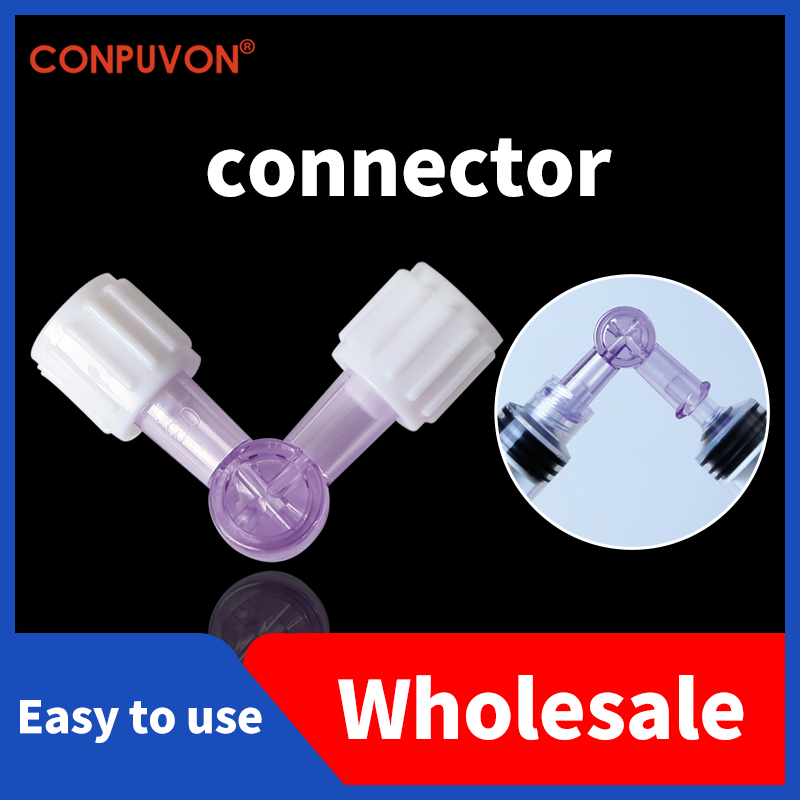Medical stopcocks play a crucial role in various healthcare applications, offering a range of functionalities that enhance efficiency, safety, and patient care. As the medical industry continuously evolves, so does the technology surrounding these critical devices. This article explores the importance of medical stopcocks, particularly focusing on the innovations in 2 way stopcock design, and the benefits they bring to healthcare practices.
The Role of Medical Stopcocks in Healthcare
● Importance in Preventing Liquid Leakage
Medical stopcocks are vital in preventing liquid leakage during medical procedures. These devices act as valves that control the flow of liquids, typically bodily fluids or medications, through intravenous tubes. By maintaining a secure connection, stopcocks prevent contamination and ensure that precise fluid amounts reach the patient.
● Application in Drug Infusion Processes
Stopcocks are extensively used in drug infusion processes, where accurate dosing and reliable delivery of medications are essential. They allow healthcare professionals to administer multiple drugs through a single IV line by controlling the flow, thus streamlining the administration process and enhancing patient safety.
Functionality of Bidirectional Hemostatic Valves
● Managing Multiple Fluid Channels
Bidirectional hemostatic valves are innovative components that can manage multiple fluid channels simultaneously. This capability is particularly beneficial during complex medical procedures where various fluids need to be administered or extracted efficiently. These valves ensure that there is minimal interruption in the fluid flow, improving the overall efficiency of medical treatments.
● Use in Emergency Pediatric Resuscitation
In emergency pediatric resuscitation, time is of the essence. Bidirectional hemostatic valves facilitate rapid and precise fluid management, crucial for stabilizing vital signs in critical situations. Their ability to control diverse fluid channels helps medical teams respond swiftly and effectively in life-threatening scenarios.
Challenges with Traditional 3-Way Stopcocks
● Complexity in Mixing Medicines
Traditional 3-way stopcocks, though widely used, present challenges such as complexity in mixing medicines. The process of connecting and adjusting multiple lines can be cumbersome, often leading to errors or delays in treatment delivery.
● Difficulties with Multiple Connections
Managing multiple connections with 3-way stopcocks can be difficult, especially in high-pressure environments. The intricate setup increases the likelihood of mishaps, such as disconnections or leaks, which can compromise treatment outcomes.
Innovation in 2-Way Stopcock Design
● Simplicity and Ease of Use
The advent of 2-way stopcock technology offers a solution to many challenges posed by traditional designs. These stopcocks are simpler and easier to use, significantly reducing setup time and potential for errors. This design innovation allows healthcare professionals to focus on patient care rather than device management.
● Compatibility with Luer Lock Syringes
2-way stopcocks are designed for compatibility with luer lock syringes, enhancing their functionality. This compatibility ensures a secure and reliable connection, preventing leaks and ensuring accurate medication delivery. The integration with luer systems simplifies the medication administration process, providing a seamless experience for practitioners.
Effective Medication Mixing Techniques
● Process of Extracting and Pushing Medicine
Effective medication mixing is crucial for patient safety and treatment efficacy. The process involves extracting medication into a syringe and carefully pushing it through the stopcock into the IV line. The precision required in this process ensures that patients receive the correct dosage without delay.
● Importance of Evacuating Gas During Mixing
Evacuating gas during medication mixing is an essential step to prevent air embolism. By carefully managing the presence of gas within the syringe and stopcock, healthcare providers can safeguard against potential complications, ensuring patient safety throughout the procedure.
Optimal Syringe Usage for Mixing Medications
● Common Use of 10ml Syringes
10ml syringes are commonly used in medication mixing due to their versatility and ability to handle various liquid volumes. Their size is ideal for most clinical scenarios, providing a balance between capacity and control, allowing precise medication preparation.
● Managing Medication Volumes for Safety
Managing medication volumes is critical to maintaining patient safety. Accurate measurement and careful control of the liquid administered help prevent overdosing or underdosing, ensuring that patients receive effective treatment without adverse effects.
Preventing Bacterial Contamination and Leakage
● Risks Associated with Piston Force
Inadequate control of piston force during medication administration can lead to bacterial contamination and leakage. It is crucial to maintain steady and moderate force to prevent breaches in the sterile environment, thereby protecting patients from infections and ensuring effective medication delivery.
● Techniques to Avoid Injection Mishaps
To avoid injection mishaps, healthcare professionals must be trained in proper stopcock handling and injection techniques. By adhering to best practices and maintaining vigilance during procedures, clinicians can minimize adverse events and optimize patient outcomes.
Handling Large Medication Volumes Safely
● Strategies for Amounts Exceeding 15ml
When dealing with large medication volumes exceeding 15ml, it is important to employ strategies that ensure safe handling and administration. Gradual delivery and careful monitoring are essential to prevent complications such as fluid overload or incorrect dosage.
● Importance of Proportional Mixing
Proportional mixing of medications is vital in maintaining therapeutic efficacy while minimizing risks. Properly mixing drugs according to their prescribed ratios ensures that patients receive consistent and effective treatment.
Ensuring Safe Infusion Practices
● Avoiding Medication Wastage and Spillage
Safe infusion practices are key to avoiding medication wastage and spillage. By employing reliable stopcocks and following stringent protocols, healthcare facilities can minimize waste and optimize resource use, contributing to overall cost-effectiveness.
● Role of Connectors in Efficient Drug Delivery
Connectors play a crucial role in efficient drug delivery by maintaining secure connections between syringes, tubing, and stopcocks. High-quality connectors ensure smooth and uninterrupted flow, reducing the chances of disconnections or leaks during critical procedures.
Advancements in Medical Device Manufacturing
● Ongoing Developments in Stopcock Technology
The field of medical device manufacturing is witnessing ongoing advancements, particularly in stopcock technology. Innovations such as improved materials, ergonomic designs, and enhanced compatibility are transforming how these devices are used in healthcare settings.
● Benefits of Innovation in Healthcare Devices
Innovations in healthcare devices bring numerous benefits, including improved patient safety, enhanced treatment outcomes, and increased efficiency. By embracing new technologies, healthcare providers can deliver higher quality care and streamline medical processes.
Introducing conpuvon: Innovators in Medical Aesthetic Accessories
Conpuvon is a leading Chinese brand under Zhongsheng Medical Technology CO., LTD, specializing in medical aesthetic needles and accessories. Headquartered in Jiangsu, China, with nine global branches, Conpuvon offers convenient services to its clients. Known for its renowned brands like Bellona and Restylane, Conpuvon provides high-quality products, including micro cannulas and skincare accessories, catering to clinics, salons, and home use. Committed to flexibility, Conpuvon offers OEM/ODM solutions, ensuring a one-stop experience for distributors and retailers worldwide.

Post time: 2025-01-27 17:17:08













